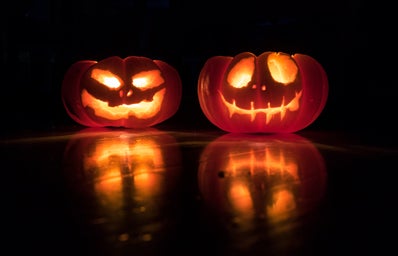Halloween is a very popular holiday celebrated by thousands across the United States. This holiday has become a cultural phenomenon that that has sparked various films and traditions that have been practiced for centuries. However, not a lot of people know the origins of Halloween, though many claim it as their favorite holiday.
According to History, Halloween originated in the Ancient Celtic festival of Samhain which was celebrated annually on the 31st of October. During the festival people would come together around bonfire dressed in various costumes as a way to warn off spirits. November 1st was the day in which the United Kingdom and northern France celebrated the new year. It was also deemed to be saints day by the Christian church who called it All-hallows day. This day was marked as the end of summer and the beginning of the colder months, ironically it was also associated with death and darkness.
Many believed that on the night before the new year, “the boundary between the worlds of the living and the dead became blurred”. Thus, the Samhain was celebrated on the night of October 31 because it was believed that was the time when the undead came to haunt the living. It soon became known as hallows eve. Therefore, out of fear of the undead and the paranormal many gathered to celebrated this infamous day. The holiday had many controversies surrounding it because it involved a heavy believe in the spiritual world, that was not deemed appropriate in colonial England where the protestant belief was dominant. Therefore, the holiday was much more accepted in Maryland and the southern colonies.
As European and American customs began to intertwine, a distinct version of halloween began to rise. However this new version of the ancient holiday, was more lighthearted, meaning that various parties were thrown. But staying true to the original concept of halloween, many still gathered to hear and tell various ghost stories that guaranteed a chill under anyone’s spine. By the middle of the 19th century, the holiday was common and celebrated annually, but it wasn’t completely celebrated across the country. Not until irish immigrants arrived and helped popularize the holiday across the country.
The tradition of trick-or treating arrived by the second half of the 19th century which included people dressing up in costume going door-to door asking for food or money. By the late 1800’s many people soon demanded for Halloween to become an annual holiday that would bring communities together through parties and “trick- or treating” opposed to focusing the holiday on ghost and the undead.
Halloween soon lost its religious undertone and is now highlighted as day of tricks and spooks. Halloween is seen as fun festivity where people embrace all the frights and scares that it has to offer. It has transitioned from being a day dedicated to warning off evil and ghost to a day of tricks and treats.

